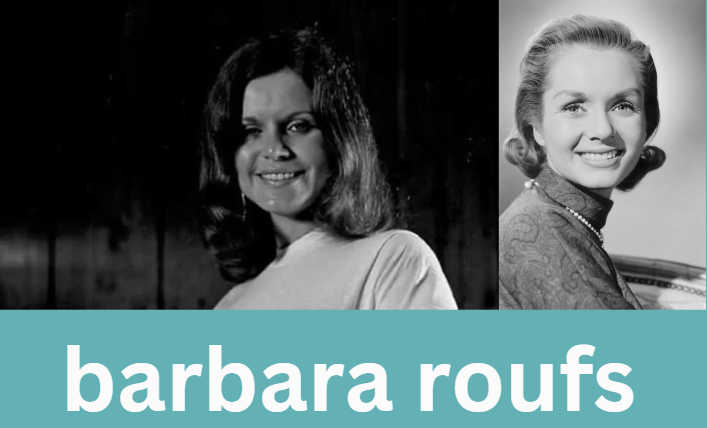Barbara Roufs was a dazzling figure in the Southern California drag racing scene during the early 1970s, known for her vibrant presence and iconic status as a trophy girl. Her contributions to the sport, though often overshadowed by other personalities, have left a lasting legacy that continues to captivate enthusiasts and historians alike.
In this comprehensive article, we will delve into the life and impact of Barbara Roufs, examining her role in the drag racing world, her influence on the culture of the time, and the lasting impression she has made on motorsport history.
Contents
The Early Life of Barbara Roufs
Little is known about Barbara Roufs’ early life, which adds to the mystique that surrounds her. Born in the United States, Barbara grew up during a time of significant cultural shifts in America. The 1960s and 70s were marked by a blend of rebellion, freedom, and a break from traditional norms. This era, characterized by its countercultural movements, influenced many aspects of American life, including motorsports. It was within this environment that Barbara Roufs found her place.
Southern California’s Drag Racing Scene in the 1970s
Southern California was a hub for car culture and drag racing in the 1960s and 70s. The region was home to numerous drag strips, including the legendary Lions Drag Strip, Orange County International Raceway, and Irwindale Raceway. These venues attracted thousands of spectators and racers, making drag racing a popular and highly competitive sport.
Barbara Roufs became a prominent figure in this vibrant scene, not as a driver, but as a trophy girl. Trophy girls played a significant role in the world of drag racing during this era. They were the face of the sport, often presenting trophies to the winning drivers and adding a touch of glamour to the gritty, high-octane environment of the racetrack.
Barbara Roufs: The Quintessential Trophy Girl
Barbara Roufs epitomized the role of the trophy girl. With her striking looks, infectious smile, and undeniable charisma, she quickly became a fan favorite. Photographed extensively by the renowned photographer Tom West, Barbara’s image was immortalized in countless pictures that captured the essence of the drag racing scene in Southern California.
The Glamour and Role of Trophy Girls
The role of the trophy girl in the 1970s drag racing scene was both glamorous and symbolic. Trophy girls were often seen as the embodiment of beauty and grace, providing a contrast to the raw power and speed of the dragsters. They were also an essential part of the fan experience, with many spectators attending races as much for the spectacle of the trophy presentation as for the racing itself.
Barbara Roufs excelled in this role, bringing her unique style and personality to every event she attended. Her presence on the track was not just about handing out trophies; it was about engaging with fans, celebrating the sport, and adding a layer of excitement to each race. Her impact was such that she became a recognizable and beloved figure within the drag racing community.
The Photographic Legacy of Barbara Roufs
One of the most enduring aspects of Barbara Roufs’ legacy is the extensive photographic archive left behind by Tom West. West, a well-known photographer of the drag racing scene, captured Barbara in numerous iconic shots that have become synonymous with the era. These images are not just photographs; they are pieces of history that offer a glimpse into the culture and spirit of the time.
Tom West’s Iconic Photography
Tom West’s photography played a crucial role in immortalizing Barbara Roufs. His images of Barbara, often taken at the height of her popularity, highlight her natural beauty and the energy she brought to the drag racing scene. These photographs have been widely circulated over the years, with many appearing in magazines, posters, and online platforms dedicated to motorsports history.
West’s work goes beyond mere documentation; it captures the essence of a moment in time, a period when drag racing was not just a sport but a lifestyle. Barbara Roufs, through West’s lens, became a symbol of that lifestyle, representing the freedom, excitement, and rebellion that defined the 1970s drag racing culture.
Misidentification and the Jungle Pam Confusion
Despite her popularity, Barbara Roufs has often been mistakenly identified as another famous figure from the drag racing world: Jungle Pam Hardy. Jungle Pam, known for her association with drag racer “Jungle” Jim Liberman, was another iconic figure of the era. The confusion between the two women is understandable given their similar roles and the overlapping circles in which they moved.
However, Barbara Roufs and Jungle Pam were distinct individuals with their own unique contributions to the sport. Barbara’s identity has often been overshadowed by this confusion, leading to a lack of recognition for her specific impact on the drag racing scene. It’s important to differentiate between the two and acknowledge Barbara Roufs for her own legacy.
The Impact of Barbara Roufs on Drag Racing Culture
Barbara Roufs’ influence on drag racing culture extends beyond her role as a trophy girl. She was a trailblazer in many ways, challenging the traditional perceptions of women in motorsports and contributing to the evolving image of the sport during a transformative period in American history.
Redefining Gender Roles in Motorsports
During the 1970s, motorsports were predominantly male-dominated. Women were often relegated to supporting roles, with little recognition for their contributions. Barbara Roufs, however, stood out as a key figure in the drag racing community. Her presence on the track and her popularity with fans demonstrated that women could play a significant and visible role in the sport.
Barbara’s success as a trophy girl helped to pave the way for greater inclusion of women in motorsports, both as participants and as fans. Her influence can be seen in the increased visibility of women in the sport today, from female drivers to commentators and industry professionals.
The Enduring Popularity of the 1970s Drag Racing Era
The 1970s are often regarded as the golden age of drag racing, a time when the sport reached new heights of popularity and excitement. Barbara Roufs was a central figure during this era, and her legacy continues to be celebrated by fans and historians alike. The photographs and stories from this period have become an important part of motorsport history, preserving the memory of a time when drag racing was at its peak.
Barbara’s contribution to this legacy is significant. She was not just a trophy girl; she was a symbol of the era, embodying the spirit of the 1970s drag racing scene. Her influence is still felt today, as fans and collectors continue to seek out images and memorabilia from this iconic period.
The Legacy of Barbara Roufs in Popular Culture
Barbara Roufs’ impact extends beyond the drag racing community. Over the years, she has become a cultural icon, representing a particular moment in American history. Her image has appeared in various forms of media, from magazines and posters to online forums and social media.
Barbara Roufs in Modern Media
In recent years, there has been a resurgence of interest in the 1970s drag racing scene, driven in part by nostalgia and a renewed appreciation for the culture of the time. Barbara Roufs has been a central figure in this resurgence, with her image and story being shared widely across various platforms.
Social media, in particular, has played a key role in keeping Barbara’s legacy alive. Fans of drag racing and vintage car culture often share photographs and stories about her, ensuring that her contribution to the sport is not forgotten. This ongoing interest has helped to cement Barbara Roufs’ status as an enduring icon of motorsports history.
Collecting Barbara Roufs Memorabilia
For collectors of motorsport memorabilia, Barbara Roufs is a highly sought-after figure. Photographs of Barbara, particularly those taken by Tom West, are considered valuable collectibles, often fetching high prices at auctions and online marketplaces. These items are not just valuable for their rarity; they are cherished for the connection they provide to a bygone era of drag racing.
Barbara’s popularity as a collectible figure speaks to her lasting impact on the sport and its fans. She remains a beloved figure, with her image continuing to inspire new generations of drag racing enthusiasts.
FAQs about Barbara Roufs
Q: Who was Barbara Roufs?
A: Barbara Roufs was a prominent trophy girl in the Southern California drag racing scene during the early 1970s. She is known for her striking looks, charismatic presence, and the lasting legacy she left in the motorsport community.
Q: Why is Barbara Roufs often confused with Jungle Pam?
A: Barbara Roufs is often mistakenly identified as Jungle Pam Hardy due to their similar roles in the drag racing community and the overlapping circles in which they moved. However, they were distinct individuals with their own unique contributions to the sport.
Q: What role did Barbara Roufs play in the drag racing scene?
A: Barbara Roufs was a trophy girl, a key figure who presented trophies to winning drivers and added glamour to the drag racing events. Her presence on the track made her a fan favorite and a symbol of the era.
Q: How has Barbara Roufs influenced modern motorsports?
A: Barbara Roufs helped to challenge traditional gender roles in motorsports, paving the way for greater inclusion of women in the sport. Her legacy continues to inspire women in motorsports today.
Q: Where can I find photographs of Barbara Roufs?
A: Photographs of Barbara Roufs, particularly those taken by Tom West, can be found in various motorsport history books, online galleries, and collector’s items. These images are highly valued for their historical significance.
Conclusion: The Enduring Legacy of Barbara Roufs
Barbara Roufs was more than just a trophy girl; she was an icon of the Southern California drag racing scene and a symbol of the 1970s. Her impact on the sport, captured in the timeless photographs of Tom West, continues to resonate with fans and historians alike. Barbara’s legacy is a testament to her role in shaping the culture of drag racing and her lasting influence on motorsport history. As we continue to celebrate the golden age of drag racing, Barbara Roufs remains a central figure, representing the spirit and excitement of a truly iconic era.


